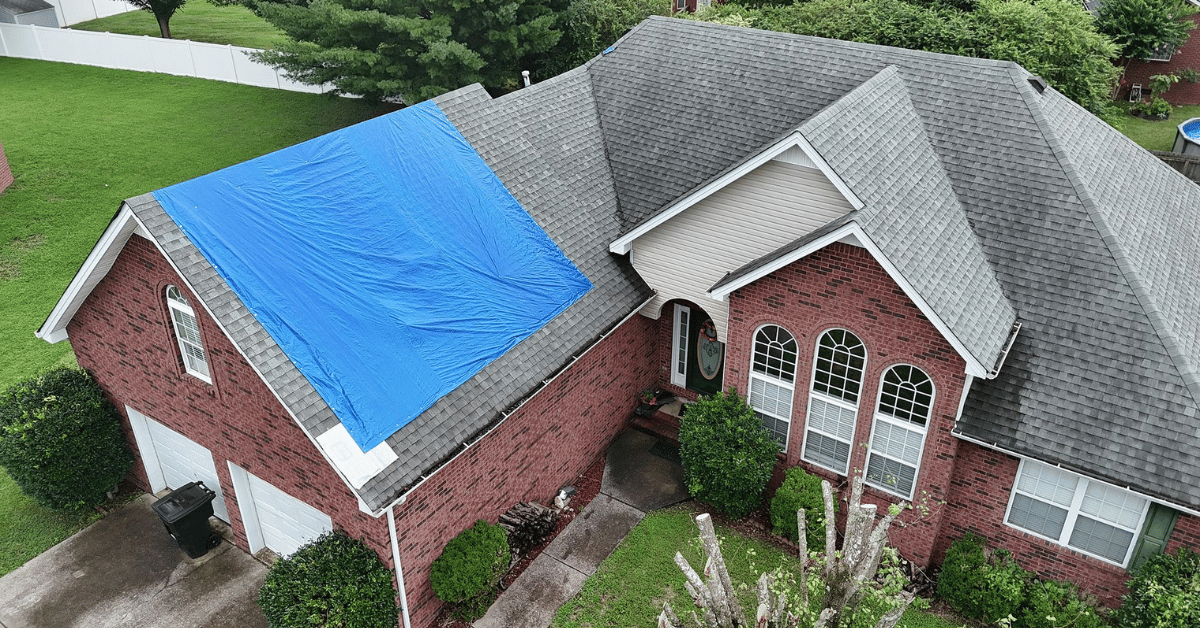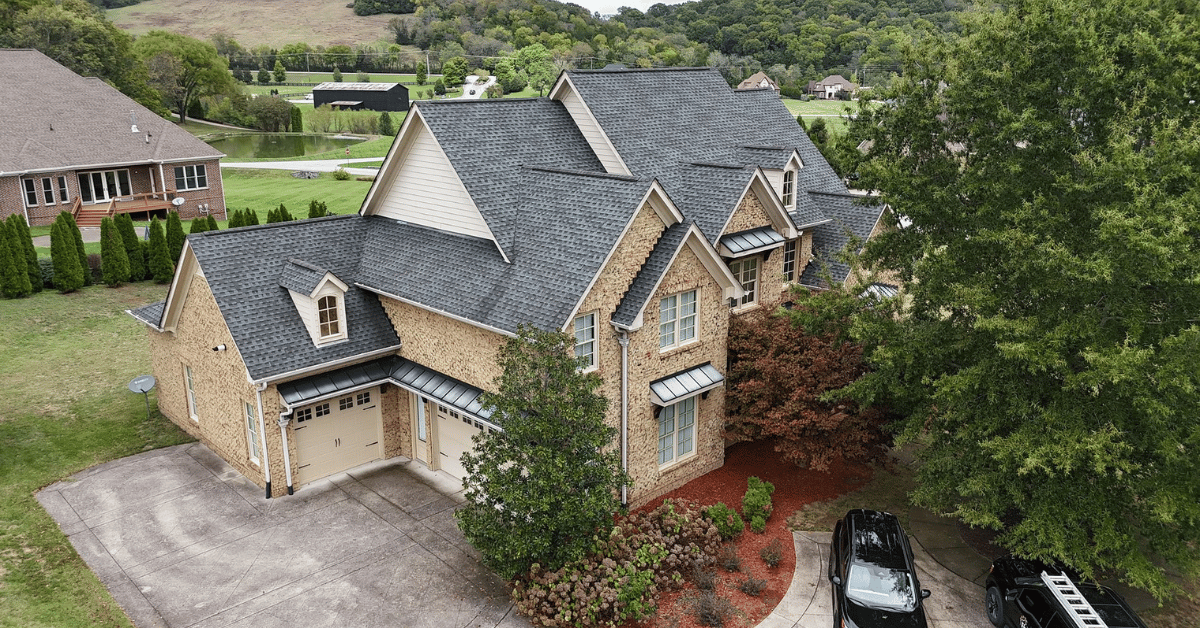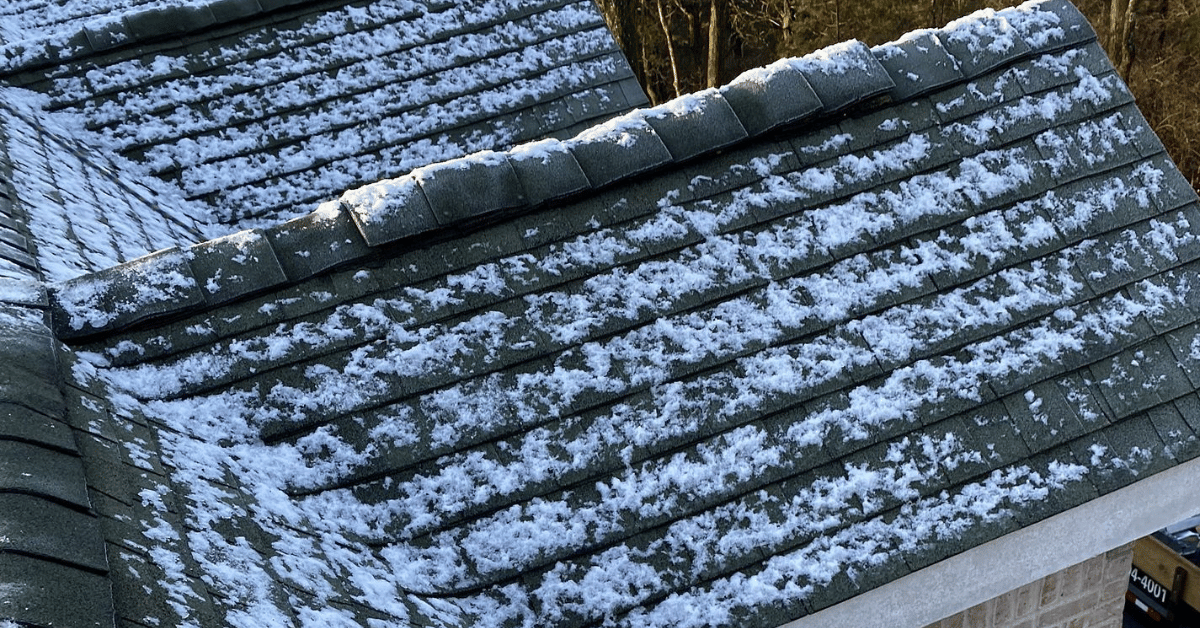
Highlights for Seasonal Roof Replacing
The ideal time for roof replacement depends on your priorities, local weather, and scheduling. Each season has its pros and cons:
- Spring: Mild weather makes it suitable for asphalt shingle sealing. Rain can cause delays, but experienced roofers manage it well.
- Summer: Early summer is optimal before extreme heat. It’s a busy season, so booking ahead is essential to avoid delays and higher costs.
- Fall: Considered the best time due to stable temperatures and weather. High demand can make scheduling difficult unless planned in advance.
- Winter: Challenging due to cold weather and potential snow. However, with careful planning and skilled contractors, it’s possible, often at a lower cost due to reduced demand.
Timely roof replacement improves energy efficiency, prevents costly damage, and enhances property value. Planning and partnering with a reputable local contractor like Five Points Roofing ensure a smooth, successful process.
Table of Contents
Seasonal Roof Replacement
The time of year for roofing replacement is whenever you’ve been able to plan for it adequately. Acting under pressure from a leaking roof or a gaping hole in an old roof can push people to make rash decisions, especially when roofing companies are busy. Not to mention that depending on the time of year, scheduling a replacement or damaged roof could take weeks if your roofing contractor is busy.
Regarding roofing, the busy season usually falls between late summer and fall, but that doesn’t mean that other parts of the year are better or worse for replacing your roof. U.S. News & World Report suggests avoiding seasons known for bad weather, which may change depending on your climate. So, it’s worth considering all the times of year that you could replace your roof and decide which is best for your needs.

Understanding Roof Replacement
Roof replacement is a significant investment for any homeowner or business owner, including those with commercial roofing needs. Understanding the process and what to expect from a roofing company is essential. A well-maintained roof is crucial for protecting your property from the elements, and regular inspections can help identify potential issues before they become significant problems. When you work with a reputable roofer, they will guide you through the entire process, from selecting the right roofing materials to ensuring a smooth installation. This safeguards your property and enhances its overall value and appeal.
Importance of a Well-Maintained Roof
A well-maintained roof is vital for several reasons:
-
Protection from Water Damage: A sturdy roof prevents water from seeping into your home, leading to costly repairs and even health hazards like mold growth.
-
Temperature Regulation: A well-insulated roof helps to regulate your property’s temperature, reducing energy bills and improving comfort throughout the year.
-
Curb Appeal: A clean, intact roof enhances your property’s curb appeal, making it more attractive to potential buyers and increasing its market value.
-
Safety and Security: A well-maintained roof provides occupants a safe and secure environment, reducing the risk of accidents and injuries caused by structural damage.
Factors Affecting Roof Replacement Timing
When it comes to roof replacement, timing is everything. Several factors can influence the decision to replace a roof, and understanding these factors can help homeowners make informed decisions.
Weather Conditions
Weather conditions play a significant role in determining the best time for roof replacement. In areas with harsh winters, it’s essential to replace a roof before the winter season to ensure the new roof can withstand snow, ice, and freezing temperatures. Cold weather can make roofing materials brittle and difficult to work with, potentially leading to installation issues. On the other hand, in regions with hot summers, replacing a roof during the cooler months can help prevent heat-related damage. Extreme heat can cause asphalt shingles to become soft and more prone to damage during installation. Therefore, planning your roof replacement around moderate weather conditions can ensure a smoother and more effective installation process.
Seasonal Considerations
Seasonal considerations also impact roof replacement timing. For example, in areas with high winds, replacing a roof during the spring or fall can help minimize the risk of wind damage. High winds can make it challenging to handle roofing materials and can even cause damage during the installation process. In regions with heavy rainfall, replacing a roof during the dry season can help prevent water damage. Rain can delay the installation process and increase the risk of water seeping into your home. By considering the typical weather patterns in your area, you can choose the best season for your roof replacement, ensuring a more efficient and less stressful experience.
Signs of Roof Damage

Identifying signs of roof damage is crucial for preventing further damage and ensuring your safety. Some common signs of roof damage include:
-
Missing, Damaged, or Loose Shingles: These can expose your roof to the elements, leading to leaks and further deterioration.
-
Cracks in the Roof’s Surface: Cracks can allow water to penetrate, causing internal damage.
-
Water Stains or Leaks: Visible water stains on your ceiling or walls indicate a leak that needs immediate attention.
-
Sagging or Uneven Rooflines: This can be a sign of structural issues that require professional assessment.
-
Damaged or Missing Flashing: Flashing protects the seams of your roof, and any damage can compromise its integrity.
-
Granules or Debris in the Gutters: This indicates that your shingles are deteriorating and may need replacement.
If you notice any roof issues with these signs, it’s essential to contact a local roofing company for a professional roof inspection and assessment. A timely roof inspection can save you from more extensive and expensive repairs.
What time of year is best for roof replacement?
Spring: Consult a roofing expert
As winter fades away and takes the cold weather with it, many homeowners start thinking about all the home improvement projects they can tackle now that it’s enjoyable to be outside again. And if they’re experiencing leaks, drafts, or cave-ins thanks to harsh winter weather, it’s also the time of year when many homeowners start thinking about replacing their roofs.
Winter can be too cold, summer can be too hot, and fall can be too busy, so for most areas of the U.S., spring is the best time to replace your roof. Asphalt shingles, in particular, need time to adhere to your roof and create the sealing that keeps them in place, which can’t happen in temperatures below 45°F. This makes spring an ideal time to consider a replacement. A professional roofing crew can efficiently handle the installation, ensuring minimal disruption to your daily life.
The only downside to replacing your roof in the spring is that the weather can be unpredictable. Rain interrupting your installation can result in some delays, but good roofers know how to accommodate changing weather and often come prepared with backup plans if the sky decides to open up. If you can plan to avoid the weather, you don’t have to let spring storms rain on your parade (or your installation).

Summer: Best roofing materials to use
For most roofing companies and contractors, summer through fall is the busiest time of year. The weather is typically consistent and warm enough to allow all tools and materials to function, making it a time when most people book their replacements. Late spring to early summer is often marked as one of the best times to get your roof installed since, in most climates, the rain has stopped, and the extreme heat and humidity of late summer have yet to set in.
However, one downside to this optimal time is that many people try to schedule replacements simultaneously. This means prices increase, quality work is down, and time slots are limited. Roofing experts will work with you to plan the best time to do your roof, but due to the significant increase in appointments, it may be a while before they can get to your house.
If your project is pushed too far back into the summer, you may have to install your roof during the dog days of extreme heat and humidity. This type of extreme weather affects not only the working conditions and hours your installers can reasonably work but also the quality of the roofing materials.
Extreme heat can melt asphalt shingles, making them less durable during installation and more prone to scuffing and damage.

Fall: Schedule a roof inspection
A basic Google search will tell you that fall is the busiest season for replacements. The combination of cool, stable weather and the onset of winter leads most homeowners to start thinking about how their homes will be affected by the upcoming cold, snow, and sleet.
Since the temperatures average between 45°F and 85°F and there is little threat of unpredictable rain, fall is typically one of the best times of year for shingles to set and seal. With cooler temperatures, roofers can work longer days without getting overheated, helping your project finish faster. Fall is also an excellent time to consider installing a metal roof, which offers durability and energy efficiency.
However, replacing your roof in the fall can have some drawbacks. Since so many people are often vying for the same appointment slots for their replacements, it can be weeks or longer between when you sign your contract and when you get your new roof. Roofing inspectors will also often tackle the most needed roof replacements first, possibly pushing the cost of your replacement into the beginning of winter, depending on your roof’s condition.
For these reasons, Devon Thorsby, a real estate editor for U.S. News & World Report, advises that if you hope to replace your roof in the fall, you should plan a month or two in advance to prepare for any delay.

Winter
Winter can be a difficult season for many roofing companies and contractors to complete replacements. If winter is when your schedule allows for a replacement or a sudden emergency forces your hand, it’s essential to try and plan as much as possible.
Replacing a roof becomes problematic when temperatures drop below 40°F. Shingles need thermal sealing to set, and while this process can happen quickly in warmer temperatures, it could take days or weeks in colder temperatures. If shingles get too cold, they can crack or break during installation. Plus, snow, sleet, and other winter weather can make it highly unsafe for workers to complete an installation.
Fortunately, it is still possible to replace your roof in the winter as long as your roofing inspector knows what they’re doing and everyone’s schedule accommodates any changes in weather. When shingles are correctly stored in a warm environment and are quickly applied with specialized tools, they can seal just as well as shingles in spring or summer. Another benefit to winter replacements is a decrease in the amount of work that local roofers often can book, which means you may be able to snag a good deal.
Any reputable residential top contractor can guarantee the quality of their work regardless of the weather, so replacing your roof in the winter may be the best option if you want schedule flexibility. Despite the challenges, experienced residential top contractors can perform metal roof installation effectively during winter.
Call Five Points Roofing today, and we can help with any other questions you may have: (615) 794-4001

Benefits of Timely Replacement
Replacing a roof at the right time can have numerous benefits for homeowners. It ensures the structural integrity of the home and offers several practical advantages.
Energy Efficiency and Cost Savings
A new roof can significantly improve energy efficiency and reduce energy costs. Modern roofing materials like metal roofing and asphalt shingles are designed to reflect heat and reduce energy consumption. By replacing an old roof with a new one, homeowners can enjoy lower energy bills and a more comfortable living space. Improved insulation and ventilation provided by a new roof can help maintain a consistent indoor temperature, reducing the need for heating and cooling.
In addition to energy efficiency, timely replacement can also help prevent costly repairs and maintenance. A damaged roof can lead to water damage, structural issues, and other problems that can be expensive to fix. By replacing a roof before it becomes severely damaged, homeowners can avoid these costs and enjoy a safer, more secure living space. Regular roof inspections and timely replacements can extend the lifespan of your roof and protect your investment.
At Five Points Roofing, we understand the importance of timely replacement. Our team of experienced roofing contractors can help homeowners determine the best time for replacement and provide expert installation services to ensure a safe and secure living space. Contact us today to learn more about our roofing services and schedule a consultation with one of our experts.
Choosing the Right Roofing Team
Choosing the right roofing contractor is critical for customer satisfaction and ensuring the final result of a successful roofing service. Here are some qualities to look for in a good roofing contractor:
Qualities of a Good Roofing Contractor
-
Experience: Look for a contractor with extensive experience in roofing services, including replacement, repairs, and installations. An experienced contractor will have the knowledge and skills to handle any roofing project efficiently.
-
Licenses and Certifications: Ensure the contractor is licensed, bonded, and certified to operate in your state and locality. This guarantees that they meet the required standards and regulations.
-
Insurance: Verify that the contractor has adequate insurance coverage, including liability and workers’ compensation insurance. This will protect you from any potential liabilities during the roofing project.
-
Reputation: Check online reviews, ask for referrals, and verify the contractor’s reputation with the Better Business Bureau. A reputable contractor will have positive feedback and a track record of satisfied customers.
-
Communication: Ensure the contractor communicates effectively, providing precise estimates, timelines, and expectations. Good communication is key to a smooth and successful roofing project.
-
Warranty: Look for a contractor that offers a comprehensive warranty on their work and materials. A warranty provides peace of mind and ensures that issues will be addressed promptly.
-
Local Presence: Choose a local roofing company with a physical presence. They will be familiar with local building codes and regulations, ensuring compliance and quality artistry.
Considering these qualities, you can find a reliable contractor to meet your roofing needs and ensure a successful project. Whether you need a replacement, repairs, or a new roof installation, hiring a professional roofing contractor will provide the expertise and service you need.
Call Five Points Roofing Today!
We go the extra mile at Five Points Roofing to ensure customer satisfaction. Whether you need a new roof, help with insurance company and insurance claims, other roofing services or a consultation about factors like materials, weather, or cost, our entire crew is here to help. Contact us today to schedule your inspection or discuss your roofing needs. Call us at (615) 794-4001 and experience the difference of a family-owned, locally owned business in Franklin, TN!




